Are Log Homes Warm In Winter?
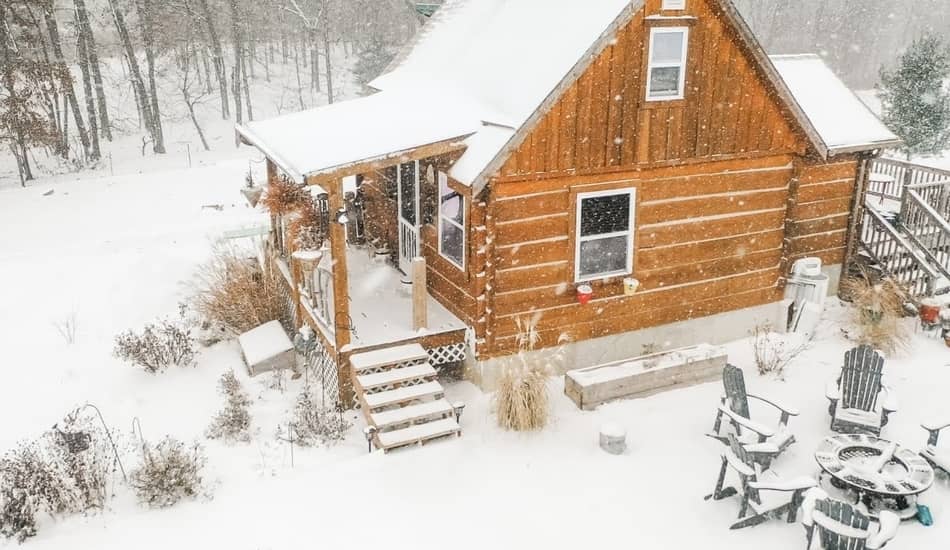
How true is it that log cabins are warm and cozy as we see them in movies? A long time ago, wooden houses were replaced with the ones we have today. There are many questions about why they were replaced and how much does it cost to heat them during winter. Nowadays, people are more interested in log homes, and their popularity is growing every day. In this article we’ll talk about log cabins during winter and can you warm them. So, let’s start!
Table of Contents
Are Log Cabins Warm In Winter?
So, Are Log Cabins Warm In Winter? Log cabins are warm and cozy in winter as they use fireplaces and electrical heaters to heat up the place. The logs from which the cabins are made have a great R-Value (thermal resistance), and together with well-installed windows, they keep the heat inside the cabin.
Log cabins can stay warm during winter. Fireplaces and electrical heaters are usually used to heat the cabin. Windows that are placed strategically can also benefit the warmth as well as no gaps in chinking and moisture control.
The most important thing that influences the heating is the cabin construction. They can be warm, cozy, and have cheap heating, but only if they are well constructed in the first place. The insulating value of the walls, floors, and roof is also important in determining how easy and cheap it will be to heat the place.
You should be aware that your log cabin needs to have walls thicker than 6 inches (150 millimeters) if you want it to be warm in winter. Those cabins of a wall thickness of 3 inches (75 millimeters) will probably be cold most of the time.
For those who want to know more, be sure to read Can A Log Cabins Survive A Tornado?
Are Log Cabins Easy to Heat?
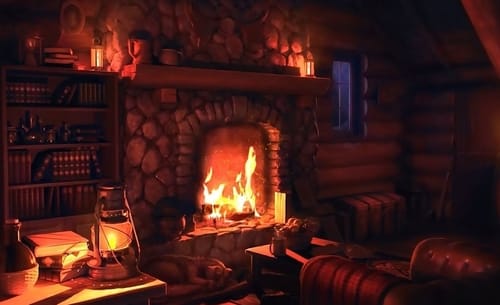
If your log cabin is well insulated, you will need less energy to heat your cabin. The smaller the heat requirement, the CHEAPER and easier it will be to heat it. This can benefit you in a lot of ways, especially because the hardware you need to buy is a lot cheaper if your log cabin is insulated well.
To heat a well-insulated cabin, you will need a smaller stove that is much cheaper than the bigger ones, and your hardware cost will probably be only a few hundred dollars. This is only if your cabin is well insulated. Fuel handling is easier if you have a solid fuel boiler or stove.
What Keeps Log Cabin Warm In Winter
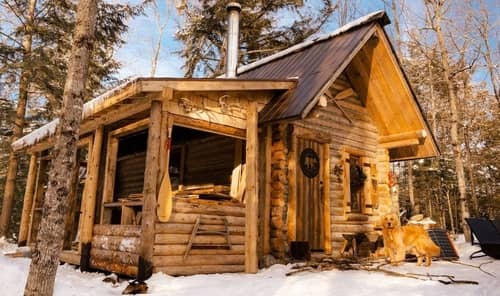
1. Thickness of the Wood
The thickness of the wood is very important when you want a warm log cabin. Natural thermal resistance in wood makes the log cabin warmer than the outdoors, so it is warmer inside during winter than outside. This internal temperature is determined by the thickness of these logs and the wall construction. The thermal resistance of the home is affected by this too.
The measure of thermal resistance is named R-Value. R-Value is different for every type of wood. For example, the wood that has a thickness of 6 inches (15.24 cm) has an R-Value a bit higher than 8. Therefore, it is really important to select the proper wood for your cabin.
This also depends if your cabin is located in a place with strong winters or mild ones. Stronger the winter, thicker the wood. These logs are also great with heat storage because they keep it inside and release it when the temperature goes down.
2. Log Assembly
It would help if you watched out for air leaks when building your log cabin. They can form during the building process or over time. They form because of the shrinking or expanding logs, so the cavities are made because of that. If you want your wood not to move too much, you should use kiln-dried wood with at least 19% moisture content. To prevent air leaks, you can also use calking. If you find some air-leaks, you can fill them with expanding foam. When logs are tight and with no gaps, the level of insulation increases.
3. Level Of Humidity
Humidity is also an important factor that influences the insulating property of log homes. Wood is known to absorb water easily, and that is how the humidity level in log cabins rises. This reduces the warmth of the cabin during winter and also makes the structure weaker. This can affect the insulation in the future and make more cracks or holes in the wooden wall, which means that the cold air will easily enter your home.
You can keep your logs dry by improving the drainage system and installing the equipment for absorbing moisture and ventilation improvement. There are many moisture-reducing devices on the market, so be sure to look for and get some of them.
Related Article: Are Log Cabin Homes Energy Efficient? Explained
4. Design and Layout
Log cabin warmness can also be affected by its design and layout. The cabins that have a proper ventilation system and also interiors that are well maintained will be warmer. It is also affected by how many windows you have in your cabin together with doors and their installation performance. Larger windows with glass panels let the sunlight in the cabin and create a warmer environment.
Therefore, when building a log cabin, it is necessary to pay attention to the number of windows that you will put. If you can, try to install the best quality windows to keep the heat inside the cabin.
5. Low Energy Consumption
Because of their warmer interior and natural insulation, log cabins require much less energy. This can bring significant savings throughout the year, up to 25% less than in traditional homes. The less need for a fireplace helps with using up less wood. This is why log cabins can be easier to maintain, where you will reduce your initial costs and make a lot of savings.
6. Environmentally Beneficial
Log cabins can benefit the environment because you’ll need to use much less electricity or wood on heating to keep your cabin warm during winter. The less usage of wood also benefits the environment. Log cabins are mostly adored in colder parts of the world because of the warmth and coziness that they provide. Lately, they are becoming a growing trend globally, and more and more people are opting for them.
What Heating System Can I Use In My Log Cabin
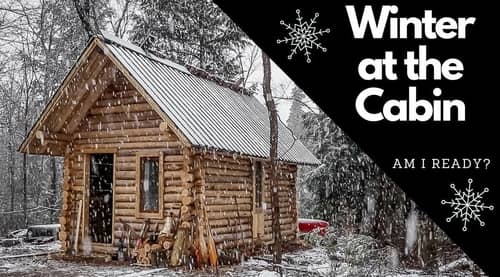
Log cabins can use any heating system. You can use underfloor heating, solid fuel, wood pellet, etc. Whichever you choose, you will be happy because it will be cheaper than you imagine. Below we will explain how to select the right heating system for your log cabin and what benefits you will have.
Types of Fireplaces
Although a fireplace seems like the best option for any log cabin, there are several ways you can use it. When talking about fireplaces, you can choose between wood, gas, or an electric fireplace. Let’s see the benefits of each one:
- Gas Fireplace
Gas fireplaces are connected to a gas line and use actual fire. You have to be careful when installing them in your log cabin because they should be installed correctly to avoid gas explosions. It is best to contact professionals to do this. Keep in mind that gas can also be expensive! With gas fireplaces, you do not have to worry about a chimney or flue. They are the best option for large cabins.
- Electric Fireplace
Electric fireplaces need electricity to run. They must be connected to an electrical connection, which can sometimes be a problem because the cabins are usually located deep in the forest. They are easy to maintain, and they don’t break too often. They are cheaper than gas but can be more expensive if you use them for a longer time.
- Wood Fireplace
Wood fireplaces are the traditional fireplaces that are the cheapest and best option if you ask me. You do not depend on electricity or gas, so you can relax and be sure that you will be warm even during a power outage. What can be difficult for people is cutting wood and dealing with a chimney. But as the log cabins are most often located in the forest, you will have no problem getting wood.
Tips How to Stay Warm in Winter in Your Log Cabin
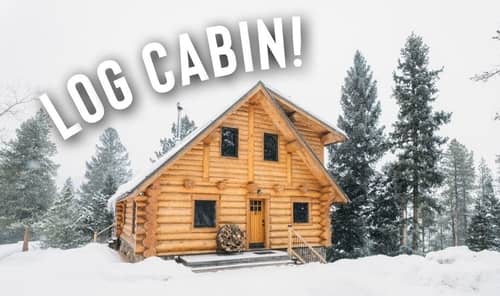
It can be hard to go through winter days in a log cabin that is not well insulated. Therefore, it is very important to know how to insulate your log cabin during cold weather and what you can do to stay warm. Here are some tips for staying warm in your log cabin.
1. The Power of White Walls
Although many people think that white walls are outdated, they are an excellent choice for log cabins. White color is what you need in a log cabin during winter. This color can replay any natural light off the walls. It will also make your place seem larger and therefore warmer and brighter. Having a white wall can greatly benefit your home.
2. Block All the Drafts
Blocking any drafts in your log cabin is the best way to stop the cold air from entering your cabin. When you keep it from entering your home, you will have a much warmer environment and use less heating. You should make sure that your doors and windows that can have drafts are secured with rolls. You can use towels instead to block the cold air.
If this is not enough for you and you still feel cold, you can put a whole blanket over your door to block the cold air even more.
3. Cover Up Your Windows
One of the options to block the cold air from the outside is to cover up your windows. You can do that by putting a clear shower curtain to block the cold air and at the same time not to block the sunlight that can help make your cabin warmer.
You can also use thick curtains. This means that you will need to open them when the sun is up and close them again at night. They will for sure help you with blocking all drafts and keeping your log cabin warm and cozy.
Here is a great YouTube video that shows how to heat a log cabin during winter.
FAQ: People Also Ask
Do Log Homes Hold Heat?
Cabins made of logs are easy to get and do not require a lot of materials for their building. Logs hold the temperature well, and your cabin will always be warmer than the outdoors, thanks to them. It should also be noted that much less energy is needed to heat them up.
What Kind of Wood To Use to Build a Log Cabin?
Many types of wood are used for building log cabins, but cedar and pine are the most common. They are easy to get and are also not as expensive as some other more “exotic” types of wood. Another advantage that should be noted is that these materials are quite high quality, which will extend the life of your cottage.
Final Thoughts
Log cabins are a great place to be during the winter. They are designed to retain heat inside regardless of external circumstances that are outside. As we have already explained in this article, there are various ways you can heat your log cabin, but the most common method is by using a fireplace. The logs from which the cabin is made are great for retaining heat, and the losses are very small, as we described. I hope this article has helped you, and that you will decide to spend one winter inside the cabin to see for yourself.

Your article helped me a lot, is there any more related content? Thanks! https://accounts.binance.com/vi/register?ref=YY80CKRN